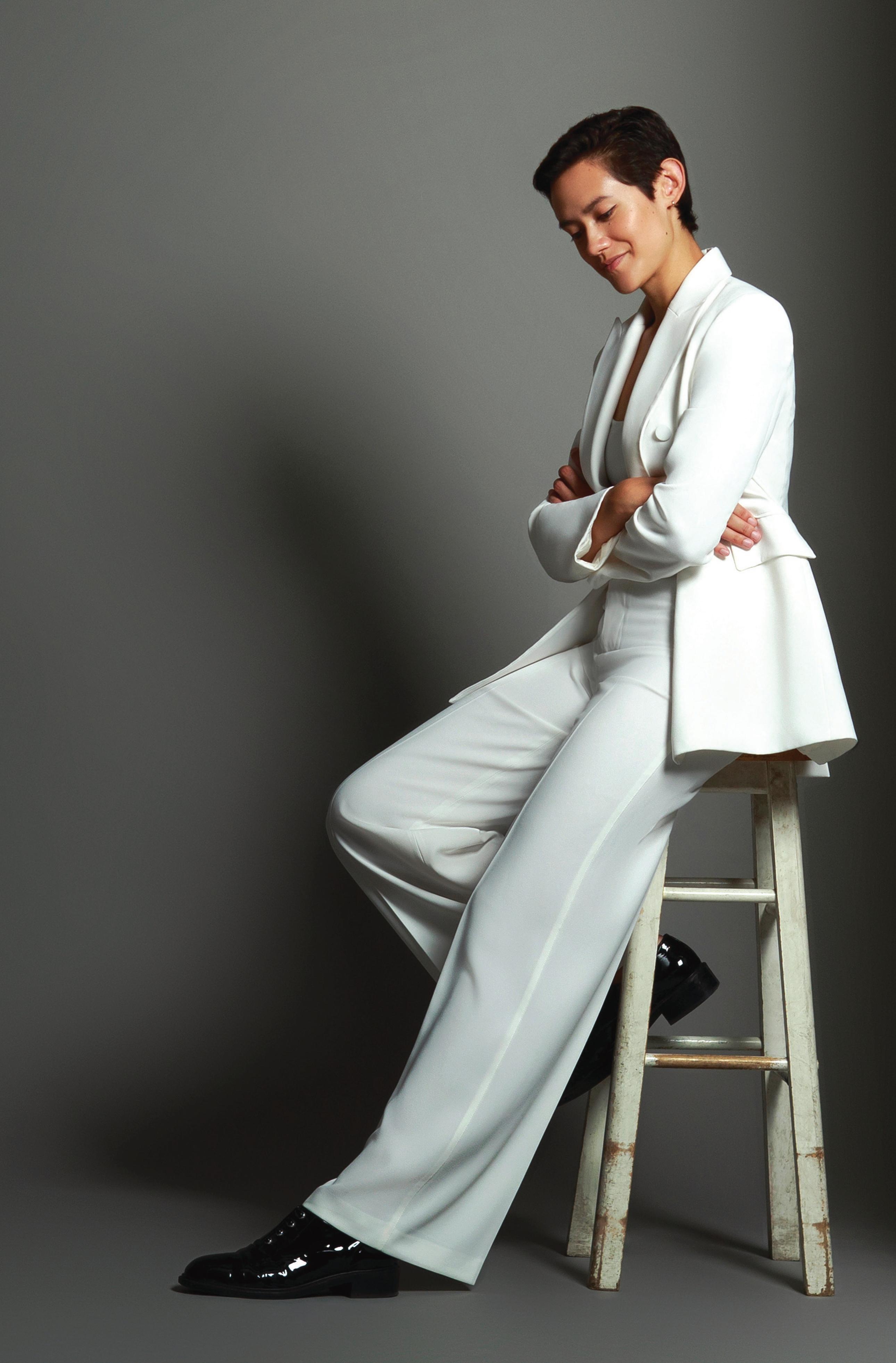
August 23, 2025


August 23, 2025

PRESENTED BY
SEASON

Saturday, August 23, 2025, at 7 PM
The Cleveland Orchestra
Stephanie Childress, conductor
BENJAMIN Simple Symphony, Op. 4 15 minutes BRITTEN I. Boisterous Bourrée (1913–1976)
II. Playful Pizzicato
III. Sentimental Saraband
IV. Frolicsome Finale
CAMILLE Cello Concerto No. 1 in A minor, 20 minutes
SAINT-SAËNS Op. 33 (1835–1921)
I. Allegro non troppo —
II. Allegretto con moto —
III. Allegro non troppo
Sheku Kanneh-Mason, cello
INTERMISSION 20 minutes
FELIX Symphony No. 3 in A minor, 40 minutes MENDELSSOHN Op. 56, “Scottish” (1809–1847)


I. Andante con moto — Allegro un poco agitato —
II. Vivace non troppo —
III. Adagio —
IV. Allegro vivacissimo — Allegro maestoso assai









Total approximate running time: 1 hour 35 minutes
Tonight’s concert is dedicated to Dr. Robert Brown and Mrs. Janet Gans Brown in recognition of their generous support of music.
Tonight’s concert is dedicated to Milton and Tamar Maltz in recognition of their generous support of music.



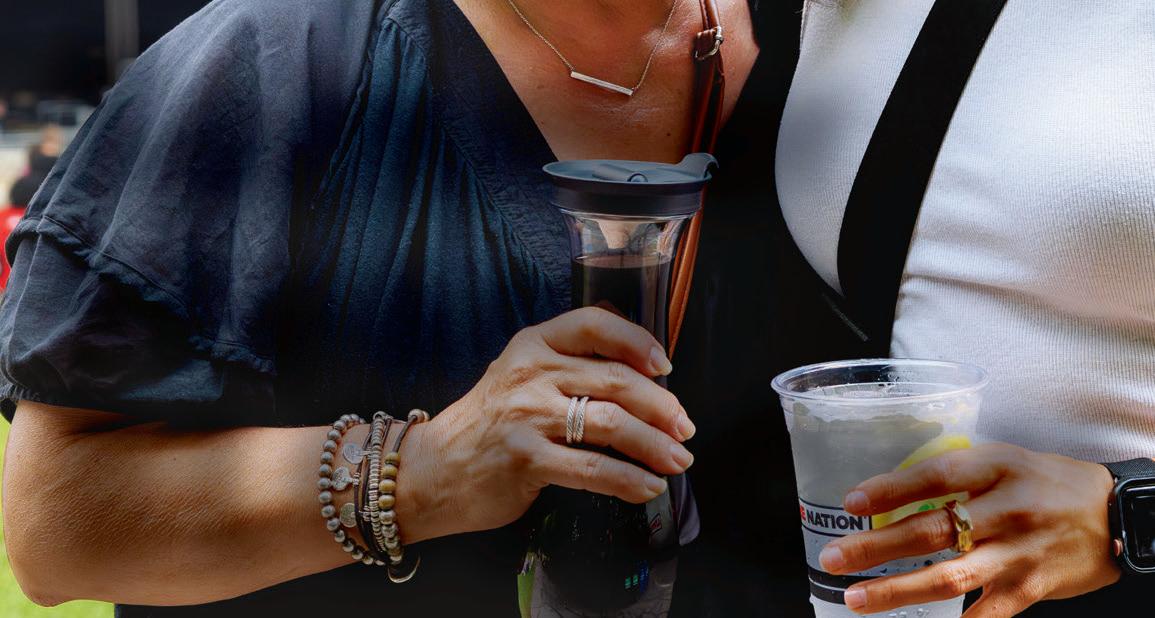








AYOUNG MAN, BARELY 20 YEARS OLD, ventures to a new and unfamiliar land. Climbing over the hills, he sees the vast countryside — towering cliffs, crashing waves, and rolling fog, and he is captivated. This was the experience of Felix Mendelssohn in 1829 as he first traveled to Scotland, a trip which would engender a lifelong relationship between him and the British Isles. Over the course of his life, Mendelssohn would visit Britain more than eight times, finding conducting engagements alongside inspiration for his compositions.
Two works draw clear inspiration from Mendelssohn’s time in the Scottish Highlands: his concert overture The Hebrides and his Third Symphony, aptly dubbed the “Scottish,” which is featured on this evening’s program led by guest conductor Stephanie Childress. With its amalgamation of stormy melodies and upbeat jigs, it is not hard to picture the landscapes that so enchanted Mendelssohn.
This inspiration was not unique to the German-born Mendelssohn. In the 20th century, a whole slew of British-born composers aimed to forge a distinctly “English” musical identity with their work, not looking far beyond the British Isles for inspiration. This includes Benjamin Britten, whose delightful Simple Symphony opens tonight’s concert. One of his earliest compositions, it draws heavily upon original themes he had composed as a child, many of them quite folklike in character.
As British classical music has continued to evolve into the 21st century, it should be no shock that our guest cellist for this concert — the incredible Sheku Kanneh-Mason — also hails from Britain. Though only 26 years old, he has already made a name for himself, traveling the globe and performing with many of the world’s top orchestras. His performance this evening of Camille Saint-Saëns’s lyrical and virtuosic First Cello Concerto will no doubt be a thrilling realization of one of the great pillars of the cello repertoire.
— Patrick O’Brien Patrick O’Brien is a development officer with The Cleveland Orchestra.
by Benjamin Britten
BORN: November 22, 1913, in Lowestoft, England
DIED: December 4, 1976, in Aldeburgh, England
COMPOSED: 1933–34
WORLD PREMIERE: March 6, 1934, in Norwich, with the composer conducting
Though the Orchestra has performed individual movements at past Family and Education concerts, tonight’s concert marks The Cleveland Orchestra’s first complete performance of Britten’s Simple Symphony.
ORCHESTRATION: string orchestra
DURATION: about 15 minutes
MUSIC HISTORY ABOUNDS WITH CHILD PRODIGIES — promising youths who can dazzle the ears with full-blown compositions, stunning performance technique, or, as is often the case, both at once. Mozart is perhaps the most famous example of this phenomenon, though Chopin, Liszt, Saint-Saëns, Clara Schumann, and Barber could easily be added to the long list as well, among many others.
Benjamin Britten is one figure that doesn’t immediately come to mind when one thinks of child prodigies. Born into a lower-middle-class family in an English fishing village, Britten was the youngest of four children. His father was a dentist and indifferent to music, leaving his mother — an amateur singer and secretary of the Lowestoft Musical Society — to foster the young Britten’s early talents. She gave him his first music lessons at age 5, before he began formal piano instruction at age 7 and viola lessons at age 10. Britten also composed in his spare time, and by age 14, he had completed over 500 works, mostly juvenilia — short piano pieces and songs — but also several strings quartets, sonatas, suites, a tone poem, an oratorio, and, in the composer’s words, “a tremendous symphony, for gigantic orchestra including eight horns and oboe d’amore.” (This astonishing burst of musical creativity was perhaps inevitable since he was born on November 22, the feast day of the patron saint of music, Saint Cecilia .)
When Britten was 20 and studying at the Royal College of Music in London, he compiled some of the tunes he’d written as a boy into a work for string orchestra entitled Simple Symphony, which is fondly dedicated to his first viola teacher, Audrey Alston. In a liner note for a 1955 recording of the piece, Britten penned an amusing portrait of his childhood self:
Once upon a time there was a prep-school boy. He was called Britten mi. [minor], his initials were E.B. [Edward Benjamin], his age was nine, and his locker number was seventeen. He was quite an ordinary little boy ... he loved cricket, only quite liked football … he adored mathematics, got on all right with history, was scared by Latin Unseen; he behaved fairly well. … But — there was one curious thing about this boy: he wrote music. His friends bore with it, his enemies kicked a bit but not for long (he was quite tough), the staff couldn’t object if his work and games didn’t suffer. He wrote lots of it, reams and reams of it. …
Of course they aren’t very good, these works; inspiration didn’t always run very high, and the workmanship wasn’t always academically sound. … [But] when Benjamin Britten, a proud young composer of twenty (who’d already had a work broadcast), came along … he found some of them not too uninteresting; and so, rescoring them for strings, changing bits here and there, and making them more fit for general consumption, he turned them into a SIMPLE SYMPHONY, and here it is.
British cheekiness and self-deprecation aside, the tunes Britten revived in his Simple Symphony are quite inventive and vividly reveal a young, curious musical mind hard at work. (And, despite the work’s title, it is a deceptively tricky work for the ensemble to pull off.)
Each of the work’s four, alliteratively titled movements use two tunes Britten composed between the ages of 9 and 12. The first, Boisterous Bourrée, is based on a 1926 piano suite and a song the young Britten wrote in 1923 on a text by Alfred, Lord Tennyson. The movement’s two-beat pattern recalls the steps of the Baroque bourrée dance, and alternates between assertive, unison string entrances and the lyrical song melody, with some lively counterpoint thrown in for good measure.

The second movement, Playful Pizzicato, stays true to its name with plucked lines that gleefully bounce between the different sections of the ensemble. The borrowed
tunes are both from 1924 — a scherzo for piano and the Rudyard Kipling –inspired vocal work “The Road-Song of the Bandar-Log.” (Fans of Wes Anderson’s films might also recognize this movement from its appearance in his 2012 coming-of-age comedy Moonrise Kingdom.)
The third movement, Sentimental Saraband, is the longest of the four and takes a more serious tone, with long, sighing string lines that flicker between the major and minor modes. Its title and time signature (3/2) are a throwback to a different Baroque dance form, the sarabande, with its slow, graceful lilt in triple meter. Britten based this movement on another early piano suite of his (from 1925) and a waltz from 1923.
After the sarabande fades, a rapidly ascending, unison string line bursts onto the scene, heralding the start of the Frolicsome Finale. Based on a piano sonata and song (from 1926 and 1925, respectively), Britten unleashes a bag full of compositional tricks in this witty movement, with rhythmic surprises, sudden mood changes, and a fake ending or two hidden along the way.
— Kevin McBrien
Kevin McBrien is The Cleveland Orchestra’s editorial & publications manager.






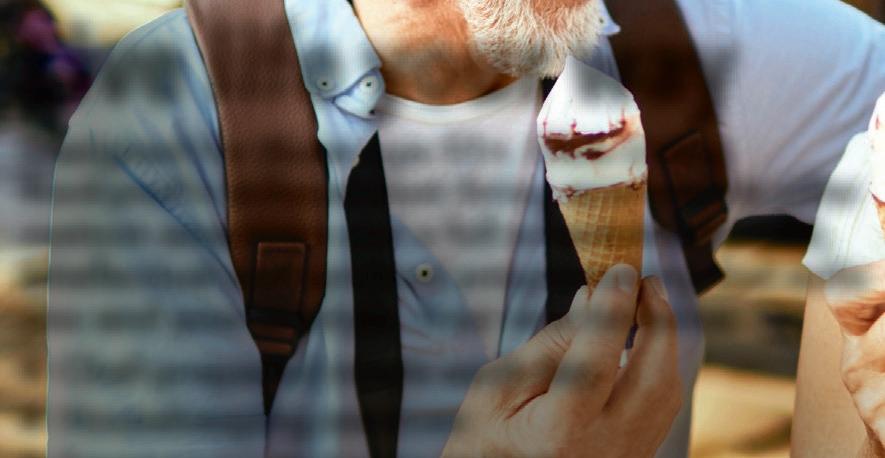











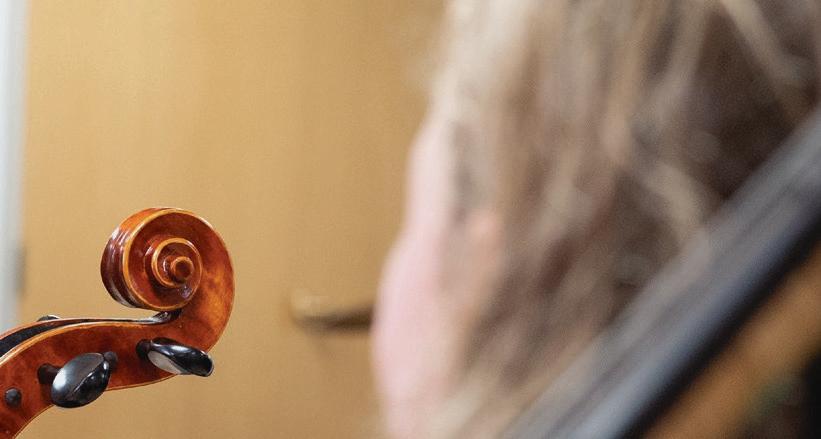

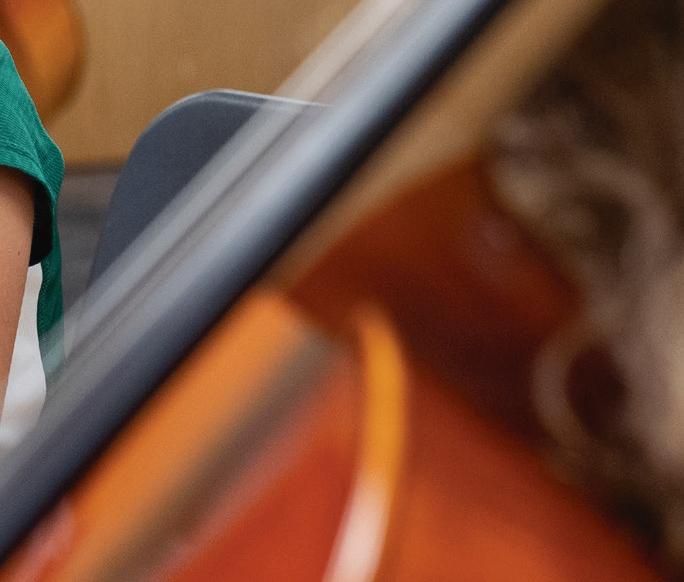



by Camille Saint-Saëns
BORN: October 9, 1835, in Paris
DIED: December 16, 1921, in Algiers
COMPOSED: 1872
WORLD PREMIERE: January 19, 1873, with soloist Auguste Tolbecque and the orchestra of the Société des Concerts conducted by Édouard Deldevez
CLEVELAND ORCHESTRA PREMIERE: November 16, 1919, featuring then-Principal Cello Victor de Gomez and led by Music Director Nikolai Sokoloff
ORCHESTRATION: 2 flutes, 2 oboes, 2 clarinets, 2 bassoons, 2 horns, 2 trumpets, timpani, and strings, plus solo cello
DURATION: about 20 minutes
NO COMPOSER HAS EVER BEEN ABLE TO MATCH the unbelievable precocity of Mozart, who wrote his first symphony at age 8. Camille Saint-Saëns, however, came close. He first played the piano in public at age 5, and at 10 gave his formal debut at Paris’s Salle Pleyel, performing Mozart and Beethoven concertos and offering to play any of Beethoven’s sonatas from memory as an encore. Saint-Saëns eventually grew up to become a national institution in France, one of the country’s most prominent composers, pianists, and organists, who was universally respected, though far from uncontroversial. (This was largely due to his music being seen as conservative in some circles — and for his outspoken criticism of composers such as Debussy, Stravinsky, and Richard Strauss — though the composer did admit to admiring the music of Wagner and Liszt.)
At the time of his death at age 86, Saint-Saëns’s catalog contained 169 opus numbers, plus a great many unnumbered works (including about a dozen operas, of which only Samson and Delilah is generally known today). His output covers just about every type of music that existed in France at the time, from symphonies and concertos to sacred music, chamber music, songs, and works for the keyboard. He also composed music for the 1908 silent film L’assassinat du duc de Guise (The Assassination of the Duke of Guise), which was one of the first films to feature a score comprising entirely original music.
Though not a string player himself, Saint-Saëns had a strong affinity for string instruments. He wrote three concertos and numerous other solo works for the violin, as well as two concertos and two sonatas for the cello (not to mention “The Swan,”
that most beloved of cello solos, which is the penultimate movement of Saint-Saëns’s popular suite The Carnival of the Animals).
The First Cello Concerto was written in 1872 for Auguste Tolbecque, principal cellist of the Paris Conservatory Orchestra. It stands out among Saint-Saëns’s concertos by its serious tone and innovations in form — the usual three movements are condensed into one, and the concerto as a whole is played without pause.
It begins without any introduction as the solo cello launches into a passionate theme with a wide melodic range, strong offbeat accents, and fast runs. The tremolos (rapid pitch alternations) in the violins and violas only add to the excitement. Except for a few moments when a more lyrical idea takes over, this passionate tone is sustained throughout the entire movement.
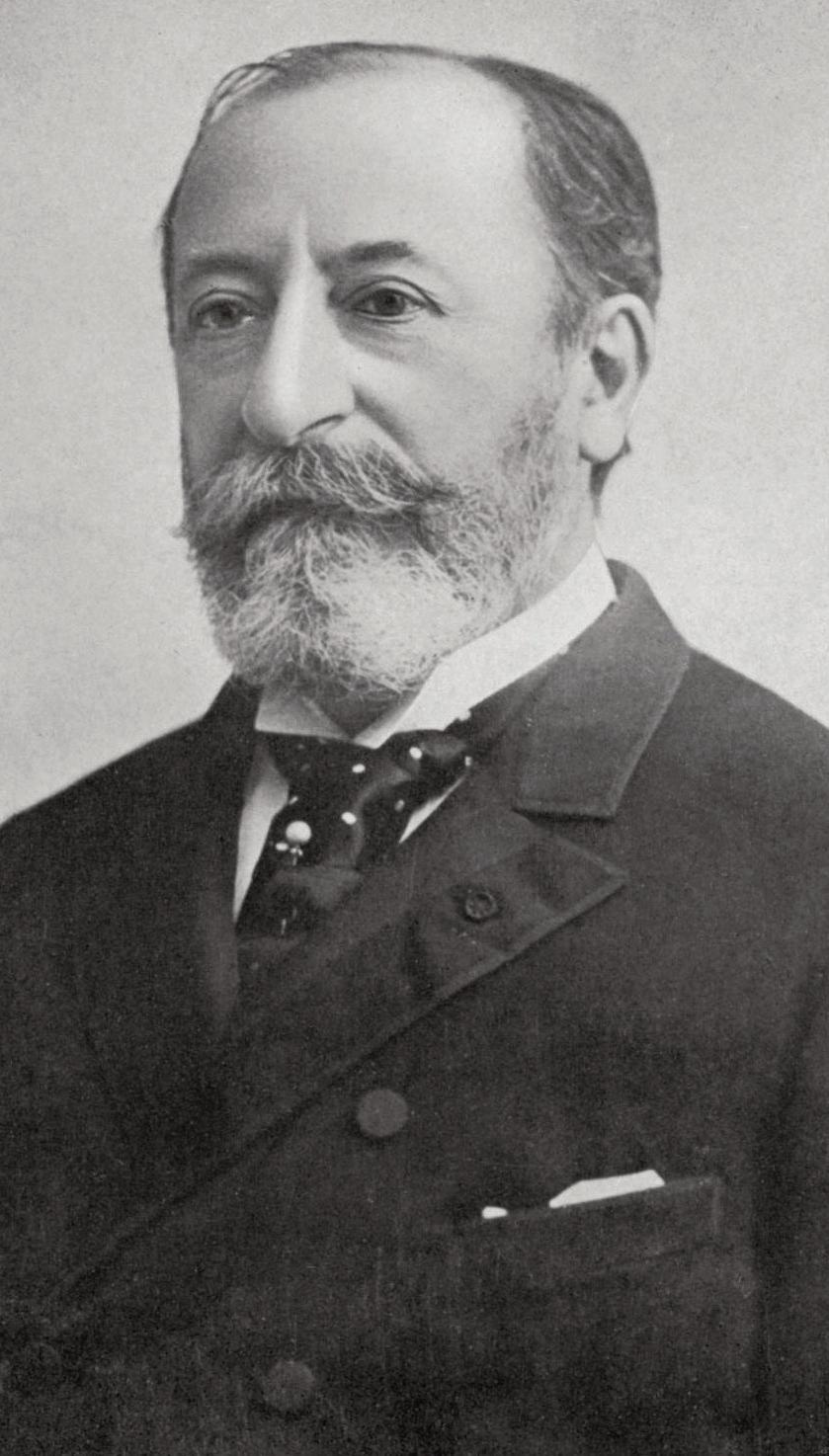
Then, suddenly, everything changes. The music moves to a new key, tempo, and meter, and we hear a dainty minuet, intentionally old-fashioned, played by muted strings. (This section made one famous commentator, Donald Francis Tovey, think of “a group of those little dancers supported on a tripod of bristles that move so prettily if you put them on the lid of a pianoforte and play.”) The solo cello adds a nostalgic countermelody to the minuet; at one point, the solo part evolves into a brief cadenza.
The passionate melody of the opening then returns and is expanded into a brilliant finale. At the very end, the tonality changes from minor to major, and the piece ends with a flourish.
— Peter Laki
Peter Laki is a musicologist and frequent lecturer on classical music. He is a visiting associate professor of music at Bard College.
by Felix Mendelssohn
BORN: February 3, 1809, in Hamburg
DIED: November 4, 1847, in Leipzig
COMPOSED: 1829–42
WORLD PREMIERE: March 3, 1842, with the composer conducting the Leipzig Gewandhaus Orchestra
CLEVELAND ORCHESTRA PREMIERE: November 14, 1935, led by Music Director Artur Rodziński
ORCHESTRATION: 2 flutes, 2 oboes, 2 clarinets, 2 bassoons, 4 horns, 2 trumpets, timpani, and strings
DURATION: about 40 minutes
FELIX MENDELSSOHN’S REPUTATION AS A COMPOSER has undergone a steadily evolving course over the past century and a half. Upon his early death in 1847 — aged only 38 years — he was hailed as one of world’s greatest music practitioners. He was an accomplished pianist, an extraordinarily gifted organist, a celebrated composer, and one of the first great conductors. Add to these his keen interest in science and literature, his ability to draw and paint, and his well-practiced skills for entertaining and socializing — Mendelssohn was very much a quintessential Renaissance man of the Romantic era.
However, the next hundred years saw his reputation tarnish and fade, and much of his music was all but forgotten. The German supremacist composer Richard Wagner began a violent attack on Mendelssohn’s music (and family origins) as early as 1850, and the Nazi regime continued on a similar path in the 20th century, banning performances of his music in the 1930s and ’40s. Only in the past 50 years or so, with more thoughtful and objective studying of Mendelssohn’s work and contributions to 19th-century music, have the depth and range of his art begun to shine anew.
In 1829, the 20-year-old Mendelssohn departed Berlin for Great Britain on the first part of a planned “grand tour” around Europe. At one point, Mendelssohn and his childhood friend Karl Klingemann set off to walk across parts of Scotland. Its “wild and rugged” landscapes held particular appeal for anyone with Romantic ideas of nature and art in the early 19th century, and the two friends filled the composer’s
notebook, with Mendelssohn drawing landscape scenes and Klingemann writing accompanying poetic verses. From Edinburgh on July 30, Mendelssohn sent a letter to his family about his visit to the Palace of Holyroodhouse:
In the deep twilight we went today to the palace where Queen Mary lived and loved. ... The chapel below is now roofless. Grass and ivy thrive there and at the broken altar where Mary was crowned Queen of Scotland. Everything is ruined, decayed, and the clear heavens pour in. I think I have found there the beginning of my ‘Scottish’ Symphony.
In Mendelssohn’s notebook from that same day, he wrote out the musical phrase that now opens his “Scottish” Symphony, but it would be more than 10 years before he managed to complete this new work. More quickly, he used impressions and musical sketches from his trip to write the concert overture The Hebrides, which the composer premiered on his second trip to London in 1832.
During the decade between 1830 and 1840, Mendelssohn completed and premiered his three other mature symphonies. Thus, by the time he finally sat down to complete his “Scottish” Symphony in 1841, he had achieved new understanding and maturity as an orchestral composer. The completion came easily. He signed the new score in mid-January 1842, and it was first performed in March of that year. (Although Mendelssohn had always referred privately to the work as his “Scottish” Symphony, the title was not officially added until after his death.)

The symphony is cast in the customary four movements — performed attacca (without pauses) — with two shorter ones between the opening and finale. The second movement features a dancelike lilt, in contrast to the slower and quieter third movement. While no musical themes are shared between movements, the material throughout the symphony is thematically related and carries a strong unity of sound and atmosphere.
Mendelssohn quotes no actual Scottish melodies, although in the second movement he does make use of a rhythm known as the “Scottish snap.” This can give listeners a
sense that the symphony is a Scottish landscape painting in sound. But, like Mendelssohn’s sunny “Italian” Symphony, this work is more of an atmospheric piece about feelings in and around Scotland than any attempt to depict actual places or — as has also been suggested — historic events.
Despite the lack of any picturesque program, the symphony is still a work of extraordinary craft. In both the first and last movements, Mendelssohn succeeds in orchestrating passages that sound, as he wanted them to, “clear and strong, like a choir of men’s voices,” advancing his extensive interest in and knowledge of choral writing.
Particularly spirited in the last movement, the “choir” leads directly into the work’s robust and cheerful ending.
— adapted from a note by Eric Sellen
Eric Sellen is The Cleveland Orchestra’s editor emeritus. He previously was program book editor for 28 seasons.













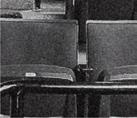






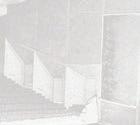




















conductor
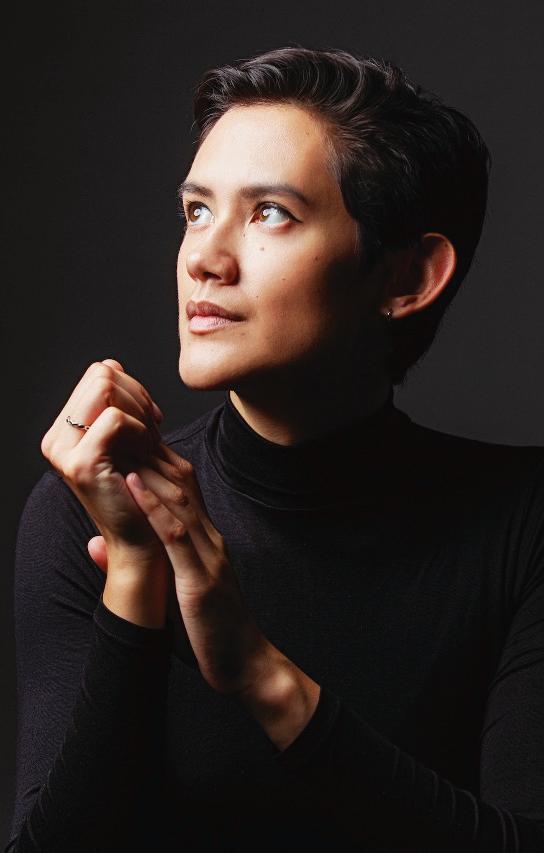
Strong ideas, lucid communication, and intensely focused energy are among the qualities that define Stephanie Childress among today’s most compelling conductors. Her musicianship and command of a broad scope of repertoire have already led her to establish herself on both sides of the Atlantic.
In 2024–25, Childress began her tenure as principal guest conductor of the Orquestra Simfònica de Barcelona i Nacional de Catalunya. The season also marked a series of returns to The Cleveland Orchestra, New World Symphony, Konzerthausorchester Berlin, and Orchestre National d’Île-de-France. She also debuted with the Royal Philharmonic Orchestra, The Hallé, and MDR Sinfonieorchester Leipzig.
From 2021 to 2023, Childress was assistant conductor of the St. Louis Symphony Orchestra under Stéphane Denève. An advocate for contemporary opera, she debuted at the Detroit Opera in the 2023–24 season with Missy Mazzoli’s Breaking the Waves and led the world premiere of Šimon Voseček ’s Ogres at the Prague State Opera.
Childress enjoys a close relationship with the French cultural scene following her second-prize win at the 2020 inaugural conducting competition, La Maestra. Since then, she has conducted the Orchestre de Paris, Paris Mozart Orchestra, and Orchestre de Chambre de Paris. In September 2023, following her involvement as one of the first conducting fellows of L’Académie de l’Opéra national de Paris, she made her debut at the Palais Garnier with L’Orchestre Pasdeloup for the ballet company’s opening gala.
A passionate advocate for amplifying the role of music within today’s world, Childress previously undertook a residency at the Villa Albertine, a network for arts and ideas spanning France and the United States. She is also a member of the FrancoBritish Young Leaders’ Program, a program created by the Franco-British Council to further cooperation across both sides of the Channel.
Childress is a relentless supporter of youth music programs and is passionate about conducting, coaching, and mentoring young musicians. She is currently the artistic director of the Sun Valley Music Festival Institute and returned to the Sarasota Music Festival in June 2025.

Cellist Sheku Kanneh-Mason’s mission is to make music accessible to all, whether that’s performing for children in a school hall, at an underground club, or in the world’s leading concert venues. Highlights of his 2024–25 season included the Konzerthaus Berlin as artist in residence, the Czech Philharmonic in Prague and on tour with both Jakub Hrůša and Semyon Bychkov, The Philadelphia Orchestra with Yannick Nézet-Séguin, and the City of Birmingham Symphony Orchestra with Kazuki Yamada. Since his debut in 2017, Kanneh-Mason has performed every summer at the BBC Proms, including as soloist at the 2023 Last Night of the Proms.
With his pianist sister, Isata, Kanneh-Mason made his duo recital debut at Carnegie Hall in a program featuring a newly commissioned piece by Natalie Klouda. The pair also appeared on tour in London, Rome, Cincinnati, Toronto, and Berlin, among others. In addition, Kanneh-Mason performed with guitarist Plinio Fernandes and jazz pianist Harry Baker.
A Decca Classics recording artist, Kanneh-Mason appears on the May 2024 recording of Beethoven’s Triple Concerto alongside Nicola Benedetti, Benjamin Grosvenor, and the Philharmonia Orchestra conducted by Santtu-Matias Rouvali. His 2020 album, Elgar, reached No. 8 in the overall Official UK Album Chart, making him the first ever cellist to reach the UK Top 10.
Kanneh-Mason is a graduate of London’s Royal Academy of Music, where he was appointed as the Academy’s first Menuhin Visiting Professor of Performance Mentoring in May 2022. In 2024, he accepted the role as patron of UK Music Masters and remains an ambassador for both the Juvenile Diabetes Research Foundation and Future Talent.
After winning the BBC Young Musician competition in 2016, Kanneh-Mason’s performance at the wedding of the Duke and Duchess of Sussex at Windsor Castle in 2018 was watched by 2 billion people worldwide. He plays a Matteo Goffriller cello from 1700, which is on indefinite loan to him.








Franz Welser-Möst Music Director
KELVIN SMITH FAMILY CHAIR
FIRST VIOLINS
Joel Link
CONCERTMASTER
Blossom-Lee Chair
Liyuan Xie
FIRST ASSOCIATE
CONCERTMASTER
Virginia M. Lindseth, PhD, Chair
Jung-Min Amy Lee
ASSOCIATE CONCERTMASTER
Gretchen D. and Ward Smith Chair
Stephen Tavani
ASSISTANT CONCERTMASTER
Dr. Ronald H. Krasney Chair
Wei-Fang Gu
Drs. Paul M. and Renate H. Duchesneau Chair
Kim Gomez
Elizabeth and Leslie Kondorossy Chair
Chul-In Park
Harriet T. and David L. Simon Chair
Miho Hashizume
Theodore Rautenberg Chair
Jeanne Preucil Rose
Larry J.B. and Barbara S. Robinson Chair
Alicia Koelz
Oswald and Phyllis Lerner Gilroy Chair
Yu Yuan
Patty and John Collinson Chair
Isabel Trautwein
Trevor and Jennie Jones Chair
Katherine Bormann
Analise Handke
Gladys B. Goetz Chair
Zhan Shu
Youngji Kim
Paul and Lucille Jones Chair
Genevieve Smelser
SECOND VIOLINS
Stephen Rose*
Alfred M. and Clara T. Rankin Chair
Eli Matthews 1
Patricia M. Kozerefski
and Richard J. Bogomolny Chair
Jason Yu2
James and Donna Reid Chair
Sonja Braaten Molloy
Carolyn Gadiel Warner
Elayna Duitman
Ioana Missits
Jeffrey Zehngut^
Sae Shiragami
Kathleen Collins
Beth Woodside
Emma Shook
Dr. Jeanette Grasselli Brown and Dr. Glenn R. Brown Chair
Yun-Ting Lee
Deborah L. Neale Chair
Jiah Chung Chapdelaine
Gawon Kim
VIOLAS
Wesley Collins*
Chaillé H. and Richard B. Tullis Chair
Stanley Konopka 2
Mark Jackobs
Jean Wall Bennett Chair
Lisa Boyko
Richard and Nancy Sneed Chair
Richard Waugh
Lembi Veskimets
The Morgan Sisters Chair
Eliesha Nelson^
Anthony and Diane Wynshaw-Boris Chair
Joanna Patterson Zakany
William Bender
Thomas Lauria and Christopher Lauria Chair
Gareth Zehngut^
Mark Kosower*
Louis D. Beaumont Chair
Richard Weiss 1
The GAR Foundation Chair
Charles Bernard2
Helen Weil Ross Chair
Bryan Dumm
Muriel and Noah Butkin Chair
Tanya Ell
Thomas J. and Judith Fay Gruber Chair
Ralph Curry
Brian Thornton
William P. Blair III Chair
David Alan Harrell
Martha Baldwin
Dane Johansen
Marguerite and James Rigby Chair
Paul Kushious
BASSES
Maximilian Dimoff *
Clarence T. Reinberger Chair
Charles Paul1
Mary E. and F. Joseph Callahan Chair
Derek Zadinsky2
Mark Atherton
Thomas Sperl
Henry Peyrebrune
Charles Barr Memorial Chair
Charles Carleton
Scott Dixon
Brandon Mason
HARP
Trina Struble*
Alice Chalifoux Chair
FLUTES
Joshua Smith*
Elizabeth M. and William C. Treuhaft Chair
Saeran St. Christopher
Jessica Sindell2^
Austin B. and Ellen W. Chinn Chair
Mary Kay Fink
PICCOLO
Mary Kay Fink
Anne M. and M. Roger Clapp Chair
OBOES
Frank Rosenwein*
Edith S. Taplin Chair
Corbin Stair
Sharon and Yoash Wiener Chair
Jeffrey Rathbun 2
Everett D. and Eugenia S. McCurdy Chair
Robert Walters
ENGLISH HORN
Robert Walters
Samuel C. and Bernette K. Jaffe Chair
CLARINETS
Afendi Yusuf *
Robert Marcellus Chair
Robert Woolfrey
Victoire G. and Alfred M. Rankin, Jr. Chair
Daniel McKelway2
Robert R. and Vilma L. Kohn Chair
Amy Zoloto
E-FLAT CLARINET
Daniel McKelway
Stanley L. and Eloise M. Morgan Chair
BASS CLARINET
Amy Zoloto
Myrna and James Spira Chair
BASSOONS
John Clouser*
Louise Harkness Ingalls Chair
Gareth Thomas
Jonathan Sherwin
CONTRABASSOON
Jonathan Sherwin
HORNS
Nathaniel Silberschlag*
George Szell Memorial Chair
Michael Mayhew §
Knight Foundation Chair
Jesse McCormick
Robert B. Benyo Chair
Hans Clebsch
Richard King
Meghan Guegold Hege^
TRUMPETS
Michael Sachs*
Robert and Eunice Podis Weiskopf Chair
Jack Sutte
Lyle Steelman 2^
James P. and Dolores D. Storer Chair
Michael Miller
CORNETS
Michael Sachs*
Mary Elizabeth and G. Robert Klein Chair
Michael Miller
TROMBONES
Brian Wendel*
Gilbert W. and Louise I. Humphrey Chair
Richard Stout
Alexander and Marianna C. McAfee Chair
Shachar Israel2
BASS TROMBONE
Luke Sieve
EUPHONIUM & BASS TRUMPET
Richard Stout
TUBA
Yasuhito Sugiyama*
Nathalie C. Spence and Nathalie S. Boswell Chair
TIMPANI
Zubin Hathi*
Otto G. and Corinne T. Voss Chair
Peter Nichols2
Mr. and Mrs. Richard K. Smucker Chair
PERCUSSION
Marc Damoulakis*
Margaret Allen Ireland Chair
Thomas Sherwood
Tanner Tanyeri
Peter Nichols
KEYBOARD INSTRUMENTS
Carolyn Gadiel Warner
Marjory and Marc L. Swartzbaugh Chair
LIBRARIAN
Michael Ferraguto*
Joe and Marlene Toot Chair
ENDOWED CHAIRS CURRENTLY UNOCCUPIED
Clara G. and George P. Bickford Chair
Sandra L. Haslinger Chair
Charles M. and Janet G. Kimball Chair
Sunshine Chair
Rudolf Serkin Chair
CONDUCTORS
Christoph von Dohnányi
MUSIC DIRECTOR LAUREATE
Taichi Fukumura
ASSISTANT CONDUCTOR
Elizabeth Ring and William Gwinn Mather Chair
James Feddeck
PRINCIPAL CONDUCTOR & MUSICAL ADVISOR OF THE CLEVELAND ORCHESTRA YOUTH ORCHESTRA
Sidney and Doris Dworkin Chair
Lisa Wong
DIRECTOR OF CHORUSES
Frances P. and Chester C. Bolton Chair
* Principal
§ Associate Principal
1 First Assistant Principal
2 Assistant Principal
^ Alum of The Cleveland Orchestra Youth Orchestra
This roster lists full-time members of The Cleveland Orchestra. The number and seating of musicians on stage varies depending on the piece being performed. Seating within the string sections rotates on a periodic basis.
Now firmly in its second century, The Cleveland Orchestra, under the leadership of Music Director Franz Welser-Möst since 2002, is one of the most sought-after performing ensembles in the world. Year after year, the ensemble exemplifies extraordinary artistic excellence, creative programming, and community engagement. In recent years, The New York Times has called Cleveland “the best in America” for its virtuosity, elegance of sound, variety of color, and chamber-like musical cohesion.
Founded by Adella Prentiss Hughes, the Orchestra performed its inaugural concert in December 1918. By the middle of the century, decades of growth and sustained support had turned it into one of the most admired globally.
The past decade has seen an increasing number of young people attending concerts, bringing fresh attention to The Cleveland Orchestra’s legendary sound and committed programming. More recently, the Orchestra launched several bold digital projects, including the streaming platform Adella.live and its own recording label. Together, they have captured the Orchestra’s unique artistry and the musical achievements of the Welser-Möst and Cleveland Orchestra partnership.
The 2025–26 season marks Franz Welser-Möst’s 24th year as music director, a period in which The Cleveland Orchestra has earned unprecedented acclaim around the world, including a series of residencies at the Musikverein in Vienna, the first of its kind by an American orchestra, and a number of celebrated opera presentations.
Since 1918, seven music directors — Nikolai Sokoloff, Artur Rodziński, Erich
Leinsdorf, George Szell, Lorin Maazel, Christoph von Dohnányi, and Franz Welser-Möst — have guided and shaped the ensemble’s growth and sound. Through concerts at home and on tour, broadcasts, and a catalog of acclaimed recordings, The Cleveland Orchestra is heard today by a growing group of fans around the world.
@ClevelandOrchestra
@cleveorch
@CleveOrchestra
@clevelandorchestra
FRANZ WELSER-MÖST, MUSIC DIRECTOR
Guests with Pavilion seats who arrive after the start of the concert may be asked to wait outside the Pavilion until the first convenient pause in the music, after which our ushers will help you to your seats.
Guests on the Lawn may bring their own chairs, but guests with high-backed chairs that obstruct others’ views may be asked to relocate to the rear of the Lawn. Rental chairs are available for a fee of $10 per evening. Tents, flags, balloons, or other structures that might obstruct views or present a hazard are prohibited. Open flames are also prohibited.
Audio recording, photography, and videography are prohibited during performances at Blossom. Photographs and videos can only be taken when the performance is not in progress. As a courtesy to others, please silence all electronic devices prior to the start of the concert.
All Blossom Music Festival events are presented in a smoke-free environment. Smoking or vaping are not allowed anywhere on the grounds or in buildings once you have entered through the ticket gates. A smoking area is available outside the gates in a designated area of Parking Lot A.
In the event of severe weather, a coordinated alert will be issued. Guests will be directed to safety by our staff and loudspeaker system. Visit clevelandorchestra.com/weather for weather updates and more information.
Free tram service between the parking lots and Smith Plaza and the Pavilion is available on a continuous basis before and after each concert. The ADA Van Service can pick up at the Main Gate with service to the Tram Circle.
Visit our Information Center, hosted by the Blossom Friends of The Cleveland Orchestra, inside the Main Gate on Smith Plaza.
The Cleveland Orchestra is grateful to these organizations for their ongoing generous support of The Cleveland Orchestra: National Endowment for the Arts, the State of Ohio and Ohio Arts Council, and to the residents of Cuyahoga County through Cuyahoga Arts and Culture.
© 2025 The Cleveland Orchestra and the Musical Arts Association


Explore upcoming concerts, purchase and access your tickets, receive performance updates, and more.
For more information and direct links to download, visit clevelandorchestra.com/tcoapp or scan the code with your smartphone camera to download the app for iPhone or Android.
Available for iOS and Android on Google Play and at the Apple App Store.

Program books for Cleveland Orchestra concerts are produced by The Cleveland Orchestra and are distributed free to attending audience members.
EDITORIAL
Kevin McBrien
Editorial & Publications Manager
The Cleveland Orchestra kmcbrien@clevelandorchestra.com
Ellen Sauer Tanyeri
Archives & Editorial Assistant
The Cleveland Orchestra
DESIGN
Judy Barabas, Red Swing Creative
ADVERTISING
Live Publishing Company, 216-721-1800
PLEASE RECYCLE







